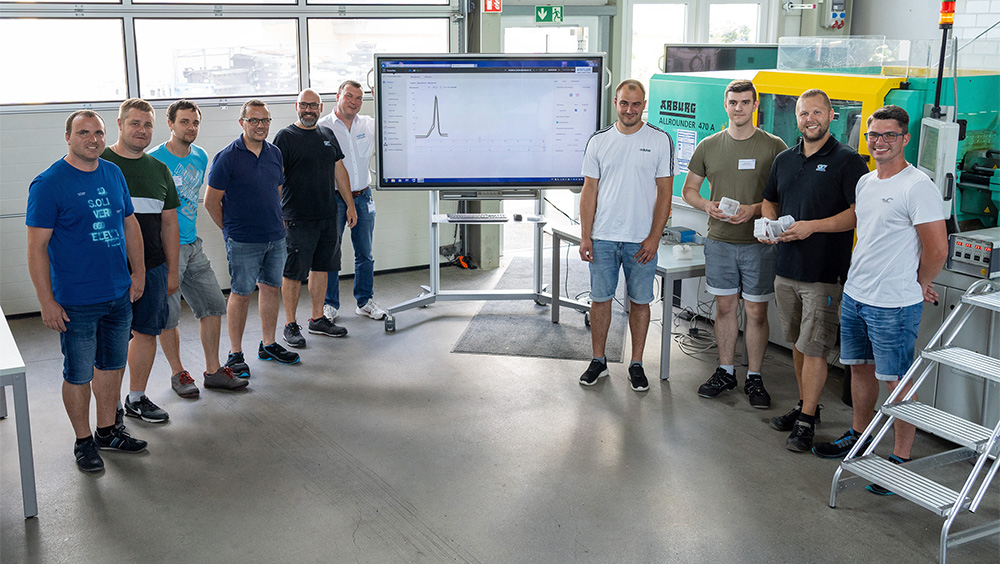Further training of specialist staff remains essential in injection molding
The Kistler Group, pioneer and world market leader in dynamic measurement technology for pressure, force, torque and acceleration, is equipping the SKZ Plastics Center with state-of-the-art sensor technology for education and research in the field of injection molding. The hardware update extends a long-standing partnership between Kistler and the SKZ in the field of education and research.

Participants (including from Formenbau GHD) and their trainers from Kistler and the SKZ during the first course with the new COMO Neo system from Kistler. (Photo: SKZ)
SKZ and Kistler offer joint course on cavity pressure
In addition to a validated injection molding machine and a precise injection mold, the production of high-quality injection molded parts requires two other key factors - continuous process monitoring and well-trained personnel. The injection molding process is gradually becoming more autonomous, with machine assistance systems unobtrusively compensating for process fluctuations caused by batch variations, for example. This also includes the cavity pressure-dependent switchover to holding pressure, which has been established for many years.
Using sensor technology profitably
Regardless of the systems used, further training for specialist personnel is essential. This is why the Würzburg Institute offers the course “Cavity pressure - signals from the injection mold”. Intensive training on the use of this technology not only offers advantages in process control, but also provides mold makers with the necessary background knowledge to use the precise sensor technology profitably. Here, the SKZ and Kistler train the participants in two full days, from the correct sensor installation to the interpretation of pressure curves and process control. In this extended course, participants and trainers can look forward to the new ComoNeo 5887A for optimizing and controlling the injection moulding process.
Cooperation since the end of the 90s
In addition to the joint activities in education, the collaboration between the SKZ and Kistler in research and development began back in the late 1990s with the use of direct measuring melt pressure sensors in the screw antechamber. Thanks to the use of sensors in the plasticizing unit and in the injection mould, many other research projects were successfully carried out. For example, in the “Analysis of mold breathing” project, researchers at the SKZ were able to combine pressure, temperature and breathing in the mold during the molded part development process for the first time.
Increased demand for thermoset materials
Five new cavity pressure sensors of type 6157C are now available to the scientists for a current test tool in the field of thermoset processing. The almost forgotten material class of injection moldable thermosets is currently experiencing increased demand. Higher requirements in terms of temperature behavior and electrical insulating properties at significantly lower material prices compared to high-performance thermoplastics make thermoset materials extremely attractive for electromobility. The researchers are currently focusing on recording the pressure curve in the curing phase.
“We are looking forward to many more years with sensor technology from Kistler at the SKZ and many exciting projects with great developments for industrial use,” says Robert Held, Group Manager for Injection Molding/Additive Manufacturing at the SKZ.


